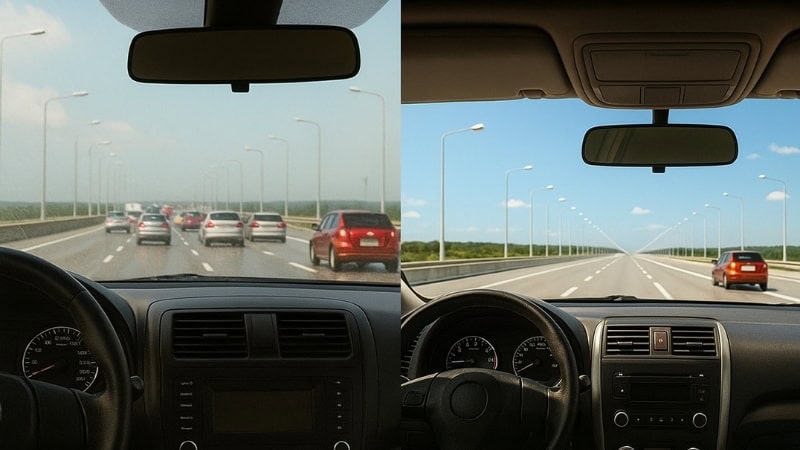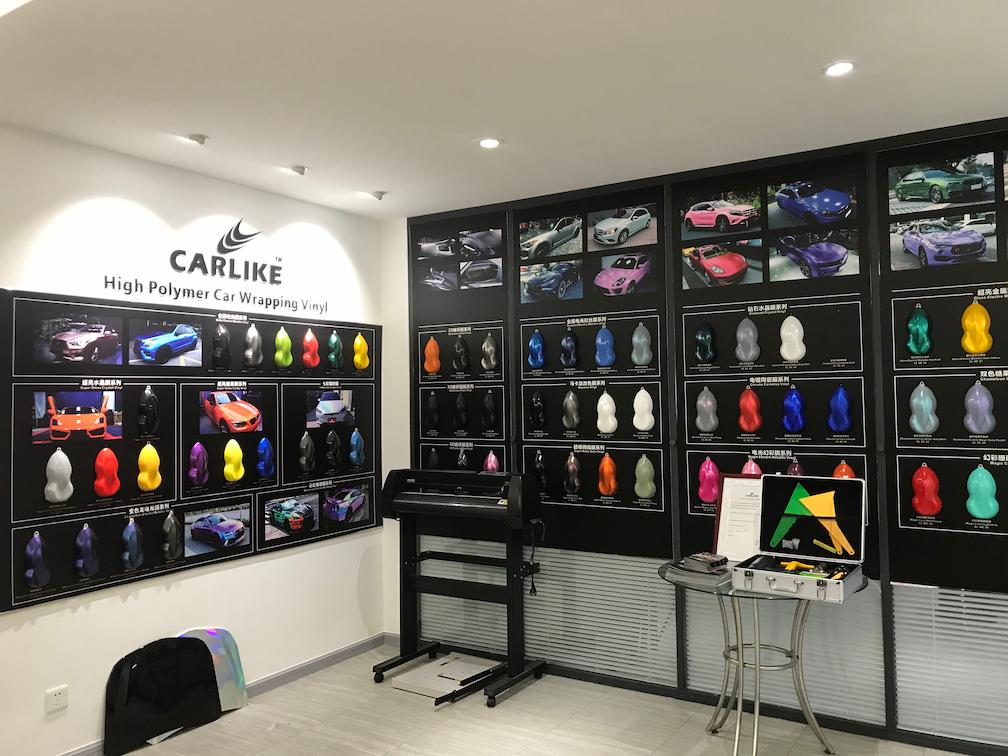Your windshield film should protect you—not endanger you! Poor-quality films can compromise safety by reducing clarity. Discover how to choose the right film with proper optical clarity and quality standards. Don’t gamble with visibility—make a smart, safe decision today. Let’s dive in!
Does Windshield Protection Film Affect Visibility?
No, windshield protection films are fundamentally designed with complete optical transmission to provide a full-fledged vision. However, the extent of optical clarity varies with the quality of film, as poor-quality films do cause haze, light distortion, and glare at night.
Premium windshield protection films are engineered for visible light transmission (VLT) in excess of 90%, and manufacturers report <1 % optical distortion when properly installed. For instance, one film datasheet lists a PET version with 91.1% VLT and 99% UV rejection.
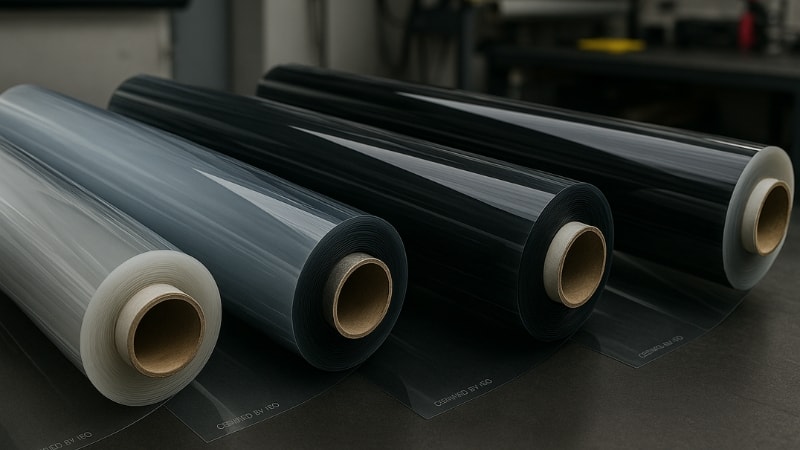
Films certified under standards such as ANSI Z26.1 (automotive safety glazing) and ISO 3917:2016 (weather & radiation resistance) provide assurance of minimal visual impact.
ANSI Z26.1
ANSI Z26.1 is an American National Standard that outlines the standards an automotive safety glazing material must meet to be deemed high quality.
These standards include factors such as light transmission, color, strength, and fracture characteristics of glazing materials like windshield protection films.
ISO Glass Safety Standards
ISO 3917:2016 also specifies a range of test methods to evaluate the safety glazing material’s resistance to high temperature, radiation, weathering, and other performance factors.
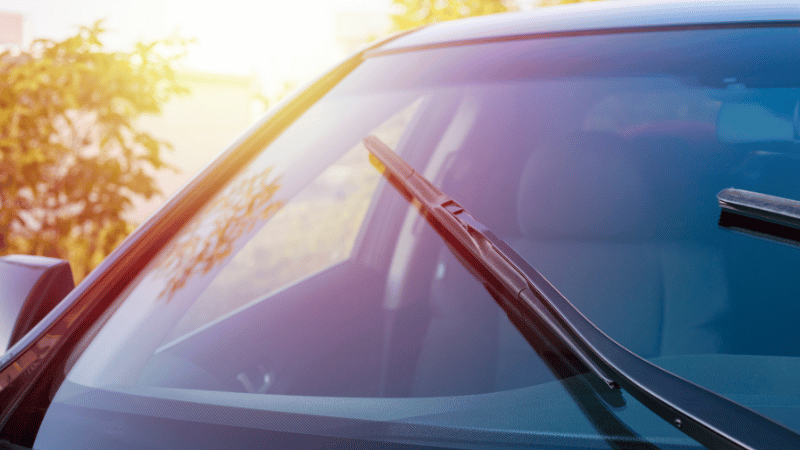
Is Windshield Protection Film Clear or Tinted?
Often mistaken for tinted window films, windshield protection films essentially come in crystal clear versions as they have to provide clear visibility on the road.
Unlike the tinted automotive films, the primary purpose of windshield protection films is to protect your vehicle’s windshield from scratches, road debris, rock chips, shattering, and other road hazards; thus, they are made durable instead of tinted.
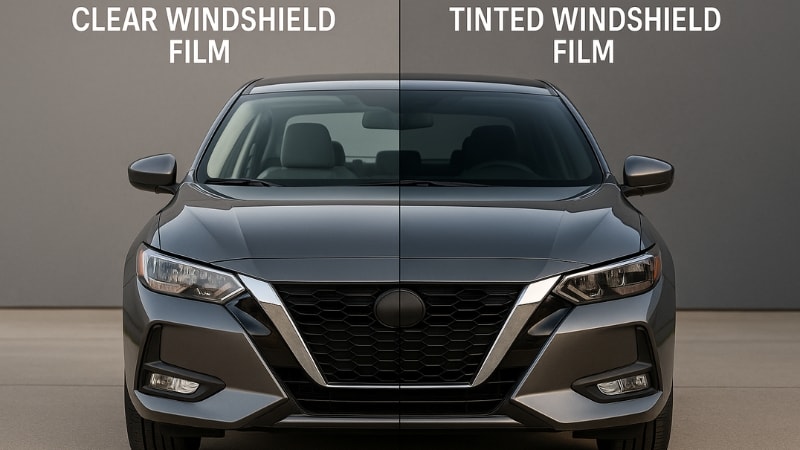
However, tinted windshield protection films are not contrary to reality and are also seen to be used. The following are the tinted variants of films used for windshield protection.
Windshield Protection Film with Shading
Windshield protection films are also manufactured with a light and faint shading with 70 to 80% visible light transmission (VLT). Shading in the film blocks a specific spectrum of radiation coming from the sun to provide the functionality of heat rejection and temperature maintenance inside the cabin.
Temperature maintenance is also good for the fuel because when less heat enters the car, the AC does not have to work as hard, thus enhancing fuel efficiency.
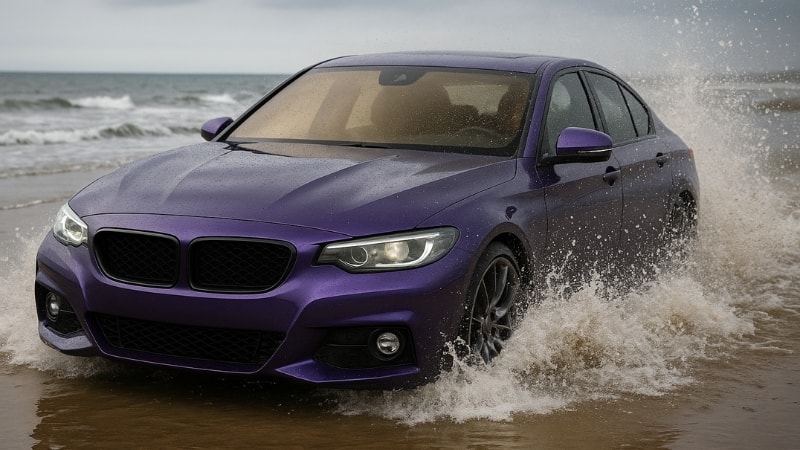
70% Window Tint Film
Some vehicle owners also opt to use standard window tint films as windshield protection layers. For this, the tint percentage cannot be less than 70% tint, as anything below this threshold such as 50% or 35%, can pose a risk of road hazard by reducing visibility.
Being the tint experts, our recommendation is to only choose a film engineered specifically for windshield protection. But if you are set on improvising tinted window film for windshield protection, ensure it has 70% VLT.
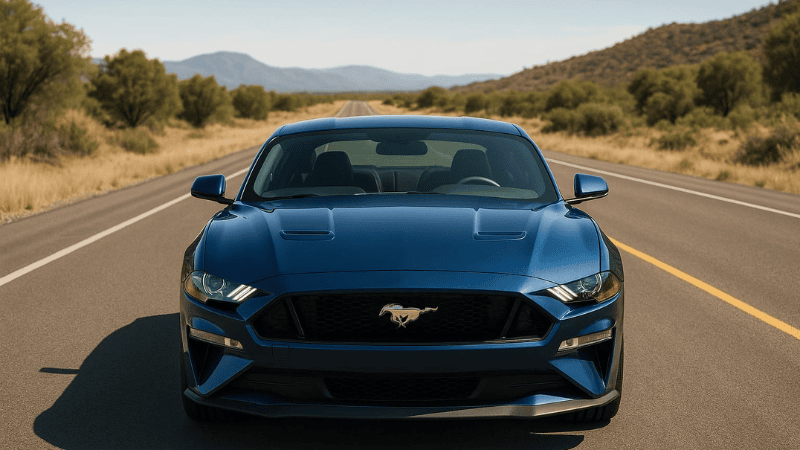
Are Windshield Films Legal to Use?
Windshield protection films are conditionally legal, as laminating your vehicle’s front-facing window with a film is a matter of security. Whether your goal is to reduce the harmful UV rays and reduce heat or to safeguard your windshield, choose a tint percentage that is legal as well as safe.
When are Windshield Films Legal?
Films for windshield protection are legal if they are optically clear and offer clear visibility to the road. For the windshield films that are tinted, they must meet the VLT and DOT safety standards of your respective region.
California tinting law restricts windshield tint only to the top 4 inches, and the remaining glass must be clear to let all the available light pass through.

When are Windshield Films Illegal?
Your windshield protection film can fall under law infringement if it is tinted too dark or obstructs the camera, based on ADAS systems. DOT safety standards require that the windshield and front side windows must allow a minimum of 70% light transmission so that the security personnel can see inside.
Always check with the tinting laws of your state or region to stay safe and compliant.
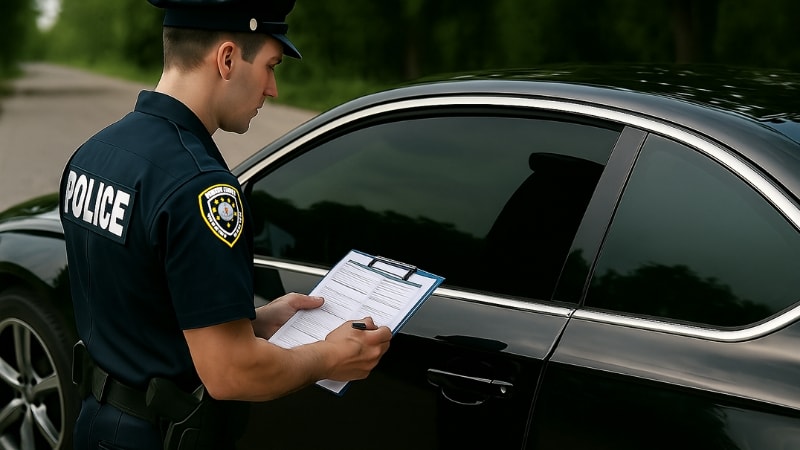
Market & Technology Insight
The global windshield protection film market is projected to expand at a CAGR of 6.7 % from 2025 to 2033, reaching approximately USD 1.06 billion by 2033.
Key drivers include rising vehicle costs (especially ADAS-equipped windshields), increased debris damage in higher-speed traffic zones, and consumer demand for pre-emptive protection. Regionally, the Asia-Pacific market leads in growth, with the U.S. and Europe following.
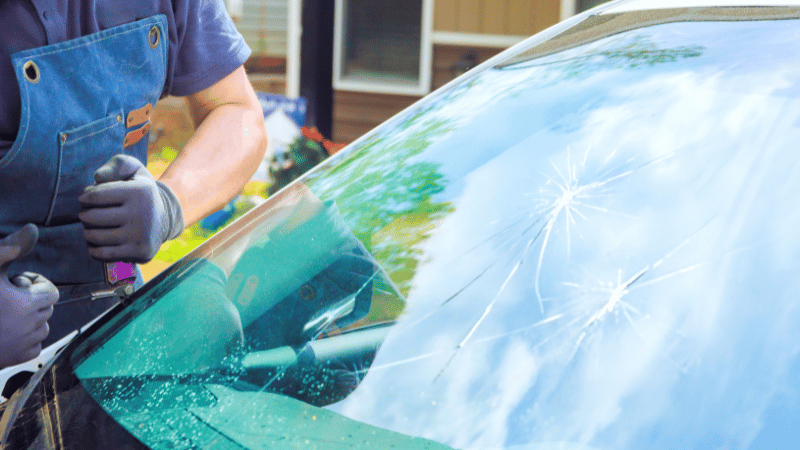
Optical Clarity & Glass Distortion: What to Watch Out For
Layering your windshield, the only window that provides vision to the road, can be risky if it starts to obscure your vision of the road.
Therefore, choosing a film requires careful consideration of various factors, as it is a matter of your safety and protection as well as your vehicle’s structural integrity.
Every window film has pros and cons, but in this section, we will shed light on what to choose and what to watch out for.
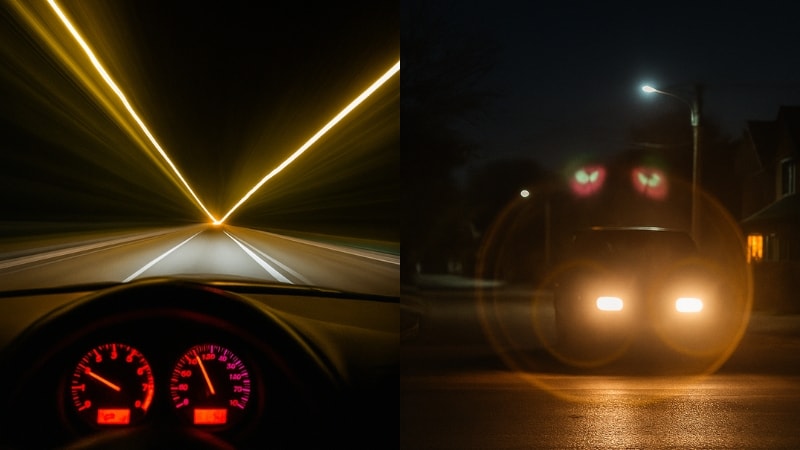
Features to Look For
Installing a good quality windshield protection film is an investment, and you must make every penny worthwhile by considering the following factors;
Less than 1% Distortion Rate: Any kind of coating or layering over the windshield glass will cause glass distortion to some extent. However, you must choose a film that claims to have less than 1% distortion rate so that you can see the road elements with clarity.
Anti-Glare and Anti-Reflective: Opt for a film that offers anti-glare and anti-reflective properties to minimize light distortion, especially from headlights and streetlights.
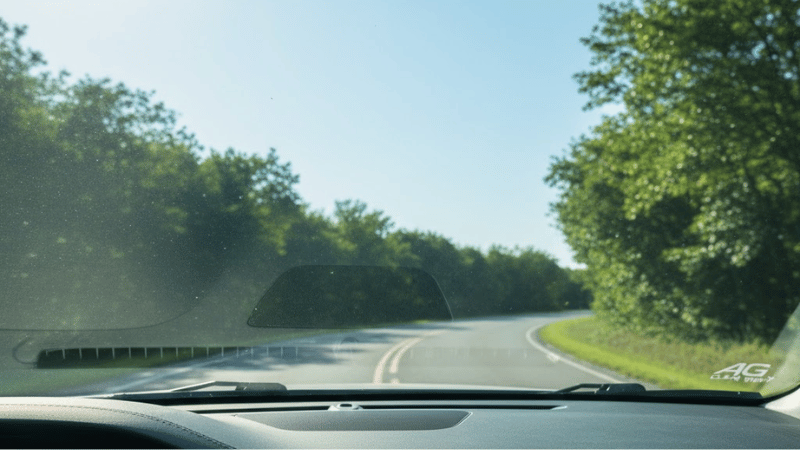
This optical clarity is also essential for safe night driving and fast object recognition. For fleet cars, it is really essential.
UV-Stable Adhesives: Go for reliable window film brands that manufacture films that are backed with UV-stable adhesives. These specialized adhesives resist breakdown under extreme sunlight and stay intact even under intense UV rays.
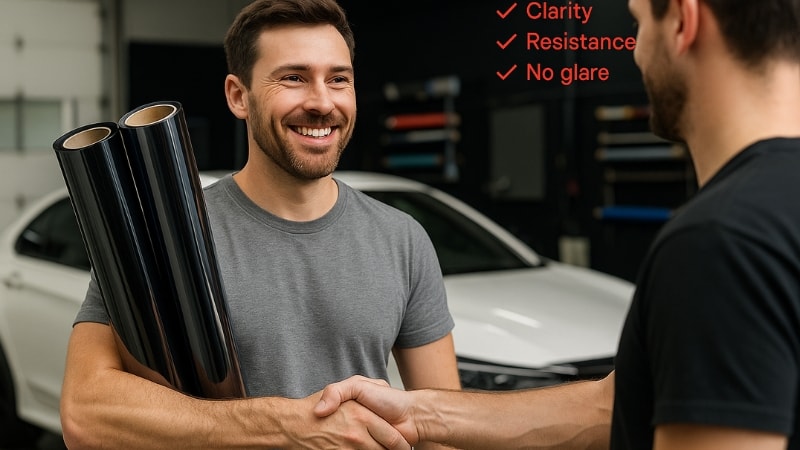
Features to Avoid
While choosing the windshield protection film for your vehicle, you must avoid films with the following features;
Cheap PET Films: The quality of the plastic polymer employed to manufacture a windshield protection film decides the performance and lifespan of the windshield film.
So, always ask for the composition and avoid the films that are made from cheap polyethylene terephthalate composite.
Films with Texture: You must also avoid protective films with textural surface or weaving pattern embossed at the micro-level, as it can obscure your road vision and become a potential hazard.
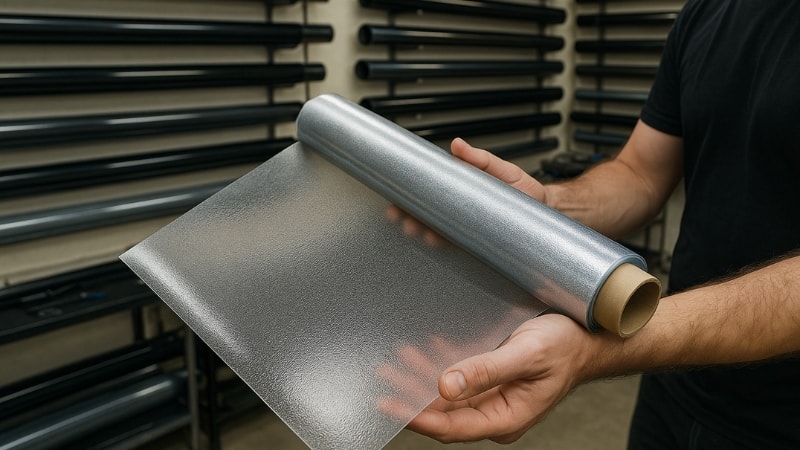
What to Look for in a Quality Windshield Film?
Just like the debate of wrap vs. paint, choosing the right windshield protection film also puts vehicle owners on the fence. But worry not, we’ve got you covered with the right information so you’ll know exactly what to look for in a quality windshield protection film.
TPU Material vs PET Material
Windshield protection films come in two types of material: thermoplastic polyurethane (TPU) and polyethylene terephthalate (PET), types of plastic polymer. Each of the window films has its benefits, with PET films being scratch-resistant due to a hard top coat, while TPU films are self-healing, given their flexibility.
So, you can choose one depending on the feature you want dominantly in the film.
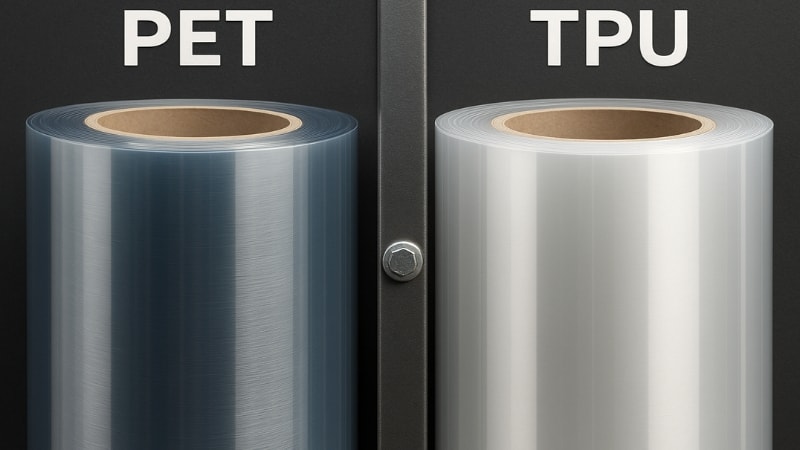
Optical Transparency Rating
It is a dielectric property of plastic that relates to the chemical structure of the base polymer. Therefore, it should come as no surprise that the better the quality of the film, the higher be optical clarity and transparency rate.
So, you must select a windshield protection film with a proven high transparency rating for maximum visibility.
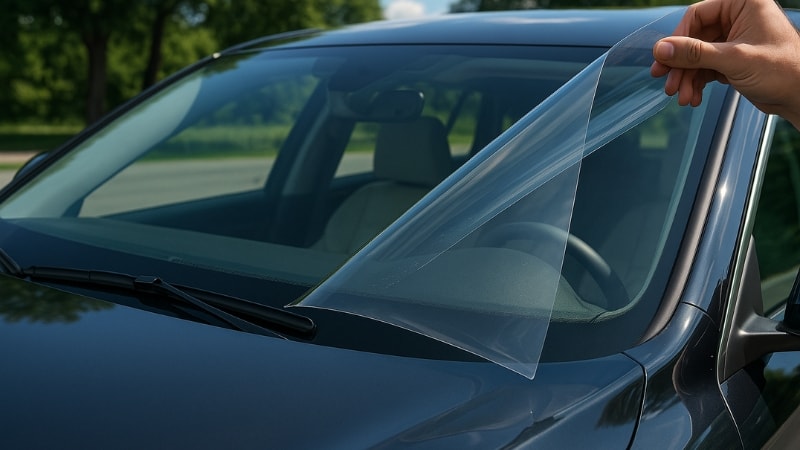
UV Resistance
Look for a windshield protection film that offers UV resistance so that, under extreme weather conditions, your film doesn’t start to melt. Moreover, films with UV resistance also filter out harmful UV rays and protect the vehicle’s occupants from their detrimental effects.
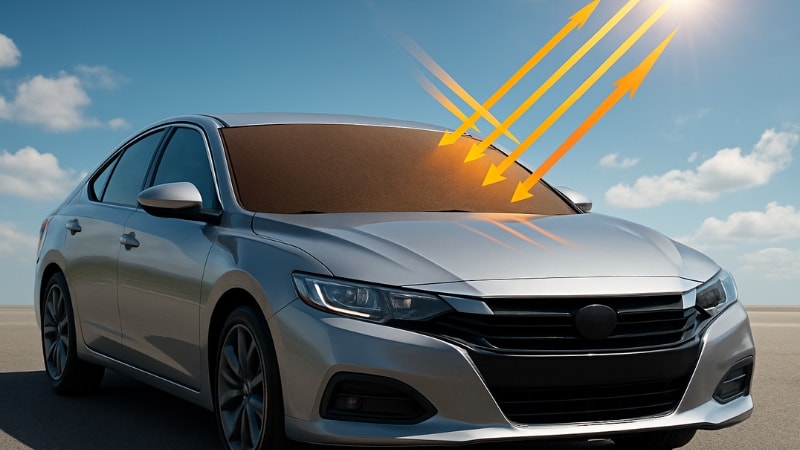
Safety Standards Compliance
No matter how good the quality of film you choose, if it doesn’t comply with the safety standards and tinting laws of your region, you are setting yourself up for penalties.
Therefore, choose a windshield film that complies with the laws regarding tint level and reflectiveness to choose a legal tint percentage.
How Does Windshield Protection Film Compare to Factory Laminated Glass?
Factory laminated glass is basically the windshield in which a dye was added in the matrix of the glass at a micro-level to manufacture a glass that is inherently shaded.
Compared with tinted glass, when an external layer of an adhesive-backed film is applied to the windshield surface, it is called aftermarket protection film.
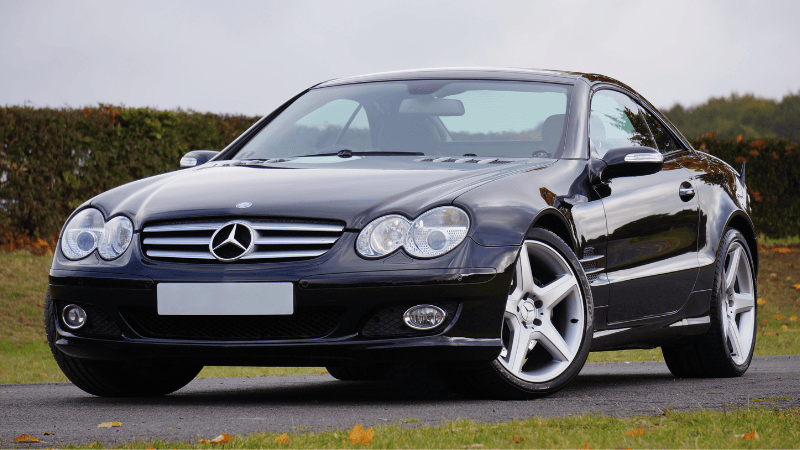
In this table, we are putting both of them to a head-on comparison so you can make a better decision.
| Features | Factory Laminated Glass | Aftermarket Protection Film |
|---|---|---|
| Impact Resistance | Not inherently resistant to impact and cannot absorb the shocks. | Have impact resistance as they are designed to absorb shocks. |
| Replaceability | Replacement is an arduous process. | Films are easier and quicker to remove and install again. |
| Cost Difference | Replacing your windshield with a new one is really expensive. | Windshield protection films are are cost-effective. |
| Drive Experience | A laminated glass does possess UV-resistance to some extent. | An aftermarket windshield protection film possesses better UV-resistant abilities. |
FAQS
Q1: How to ensure the quality of a windshield protection film is above par?
If a windshield protection film is certified with different safety standards like ANSI Z26.1 and ISO glass safety standards, then you can be assured that the film is of high quality. These certifications represent that the films have passed rigorous testing and meet the international performance benchmarks.
Q2: How can businesses ensure cost-effectiveness in bulk purchases?
A business can ensure cost-effectiveness in its bulk purchases by partnering with a reliable car wrapping partner such as CarlikeFilm that offer wholesale prices and discounts.
Q3: Can I get samples before placing a bulk order?
Yes, we offer samples so you can assess the quality and performance of our window tint films. Contact us with your sample request, and we’ll arrange prompt delivery.
Conclusion
Don’t gamble with your windshield’s quality. Once it is damaged, even professional repairs can’t restore its original strength. Windshield protection film acts as an invisible armor, preventing costly chips and cracks from road debris, UV damage, and heat.
By shielding your glass proactively, you preserve factory durability and avoid expensive replacements. In glass protection, timing is critical, and the best defense starts before the first crack appears.
Protect Your Car with High-grade Windshield Protection Film Today!
Since 2008, CarLike has become an industry giant by manufacturing high-grade automotive films and becoming a trusted supplier to various film businesses. Start with low MOQs, get fast production, and trust our strict quality control.
Carlike provides complete OEM & ODM solutions to elevate your brand. Our products can take your automotive film business to another level of success.
Contact us now to get our tailored car window film solutions for you!
